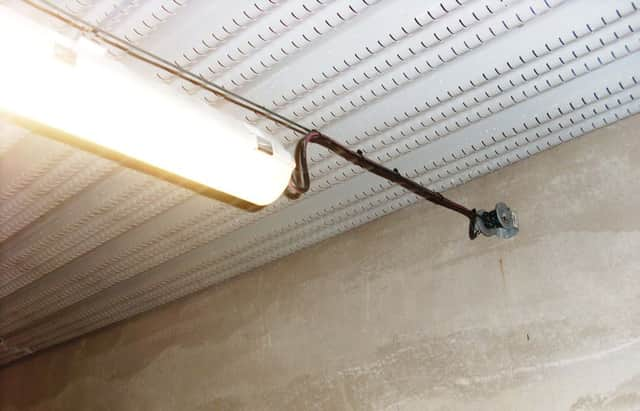DARD Management Notes: Pigs


For home mixers buying soya spot this means a £20 per tonne or £6 per pig increase in feed costs. The increase is due to several factors including poor weather conditions in Argentina, speculators and China importing 16% more this season compared to the same period last year.
Alternative protein sources that home mixers can use include rapeseed, peas, beans and distillers grains. Although their use in Northern Ireland is limited due to availability and possible presence of anti-nutritional factors it is worth speaking to your pig nutritionist about the possibility of including them in some rations. With the area of field beans grown in the Republic of Ireland increasing some southern pig producers are now including them in finishing rations. Also get your pig nutritionist to check the formulation of rations to see if it is possible to reduce soya levels. I know of one producer who was able to reduce the amount of soya in a finishing ration by 30 kg per tonne! There are also commercially available feed products containing concentrated protein which can be used to replace soya and depending on the price of soya could save £4.00-5.00 per tonne.
Advertisement
Hide AdAdvertisement
Hide AdAs a final comment the coarseness of soya varies with some loads, depending on source, coarser than others. Grist or particle size affects feed efficiency with fine grist size preferable for growing and finishing pigs. If you are one of the one third of home mixers, who do not grind soya, this is something worth considering.
Light
As I write this management note on 20 June, which is Summer Solstice or the longest day of the year in terms of daylight, it seems strange to write about artificial light for pigs. Although I hate to say it the days will start to get shorter and you will need to ensure pigs have adequate light, both in terms of duration and intensity.
The benefits of light are well documented and include gilts reaching puberty earlier, piglets suckling more leading to increased weaning weights, reduced weaning to service interval in sows and sows on heat longer. The recommendation for sows is to provide 16 hours light per day. The use of a timer is an excellent way to achieve this and cuts out the daily job of turning lights on and off!
Light intensity, that is, the brightness of light is also important and the recommendation is to provide at least 300 lux. Various factors affect light intensity including poor lighting, fly faeces and dust on lights, high walls surrounding the pigs and automatic feeders in front of sows creating shadows. If you cannot read these management notes in your sow house then it is not bright enough!
Advertisement
Hide AdAdvertisement
Hide AdAs a point of interest, in newly built or refurbished pig houses, the light fittings are not attached directly to the ceiling. They are usually clipped onto stainless steel wire which is fixed at either end of the room/building below the level of the ceiling (see photograph). As well as creating less of a fire risk it is also easier to wash the lights.
Reminder to complete pig inventory
At the end of May you received a pig inventory to complete. The inventory requires you to record the number of dry, lactating and other sows, boars, weaners/growers and finishers on your unit on 1st June 2016. If you have not completed the inventory yet, please do so and return to Department of Agriculture, Environment and Rural Affairs (DAERA) as soon as possible in the pre-paid envelope.